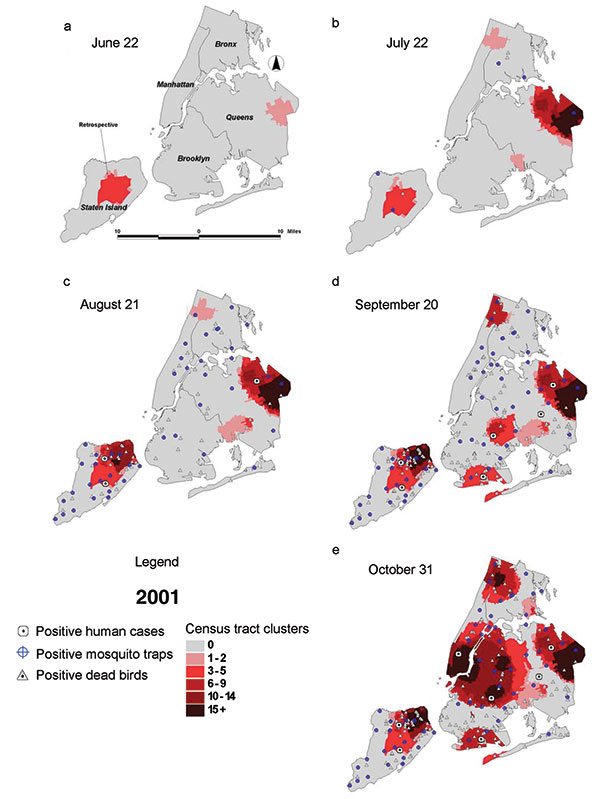Volume 9, Number 6—June 2003
Research
Dead Bird Clusters as an Early Warning System for West Nile Virus Activity
Figure 3

Figure 3. Dead bird clusters, West Nile virus (WNV)-positive dead birds, human cases, and mosquito traps, New York City, 2001. The shading represents the cumulative frequency of dead bird clusters in each census tract as of the date of analysis. Cumulative WNV-positive birds and mosquitoes are displayed on the basis of their date of collection; human cases are shown on the basis of their date of onset of illness.
Page created: December 22, 2010
Page updated: December 22, 2010
Page reviewed: December 22, 2010
The conclusions, findings, and opinions expressed by authors contributing to this journal do not necessarily reflect the official position of the U.S. Department of Health and Human Services, the Public Health Service, the Centers for Disease Control and Prevention, or the authors' affiliated institutions. Use of trade names is for identification only and does not imply endorsement by any of the groups named above.